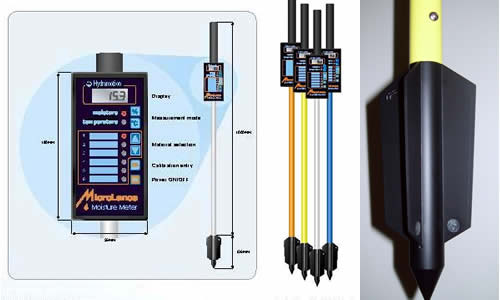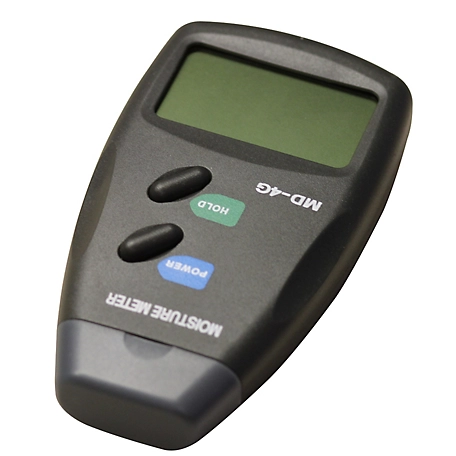Recognizing the Various Sorts Of Moisture Meters and Their Applications
Recognizing the Various Sorts Of Moisture Meters and Their Applications
Blog Article
Comprehending the Relevance of a Moisture Meter in Stopping Mold and Water Damage in your house
In the realm of home maintenance, the existence of moisture can commonly be a quiet yet formidable foe, qualified of creating prevalent mold and mildew growth and perilous water damage if left uncontrolled. Understanding the relevance of a dampness meter in this fight is not just an alternative but a calculated need.
Relevance of Moisture Discovery
Efficient moisture discovery techniques are vital for securing properties and avoiding potential mold development and water damage. Wetness can seep into different building products, bring about architectural problems and carcinogen. By making use of a moisture meter, homeowner can proactively recognize areas prone to excess moisture, enabling prompt intervention and reduction strategies.
Moisture meters provide exact analyses of dampness levels in various products such as timber, drywall, and concrete. This information assists in pinpointing areas of concern, even in hard-to-reach or concealed places. Early discovery of dampness buildup allows prompt repair services or modifications to stop additional damage.

Exactly How Moisture Meters Work
Moisture meters play a pivotal duty in the positive recognition of excess wetness, aiding in the avoidance of potential mold and mildew growth and water damage by supplying accurate analyses of moisture degrees in various structure products. These gadgets work based upon different principles, depending on their kind. Moisture Meter. Pin-type moisture meters, as an example, have 2 pins that penetrate the material to measure the electrical resistance in between them. When moisture exists, it boosts the product's conductivity, leading to a lower resistance analysis. Pinless moisture meters, on the various other hand, use electro-magnetic sensing units to check the product without causing damages. These sensing units send out electromagnetic signals that penetrate the material and gauge the dielectric properties, showing wetness web content. Some progressed moisture meters integrate both pin and pinless technologies for detailed dampness discovery. Understanding how moisture meters function is necessary for accurate and timely wetness degree analyses, enabling reliable safety nets versus mold and mildew and water damages.
Detecting Early Indication
Upon preliminary assessment of a residential or commercial property, acknowledging refined indicators of excess moisture becomes crucial in the early discovery of potential mold and mildew development and water damage. Some typical early caution indicators include moldy odors, water stains on ceilings or wall surfaces, peeling paint or wallpaper, and warped or discolored surface areas. Mildewy odors typically suggest the existence of mold or mold, even if no noticeable signs are obvious. Water stains can signify leaks or seepage, while peeling off paint or wallpaper may be a result of wetness jeopardizing the adhesion of these products to the surface. Deformed or tarnished surface areas, such as bending floorboards or blemished drywall, are clear indicators of water damages. Additionally, a boost in allergy symptoms or respiratory system concerns among owners may recommend the visibility of mold because of excess moisture. By immediately identifying and addressing these very early caution indications, homeowners can minimize the danger of extensive mold development and water damages in their homes.
Protecting Against Mold Growth
Acknowledging very early caution signs of excess wetness within a home not just enables prompt discovery of possible mold and mildew growth and water damage but likewise offers as a proactive step in stopping the expansion of mold and mildew. To effectively protect against mold and mildew development, it is essential to resolve any type of resources of wetness without delay.
Checking wetness levels in areas vulnerable to moisture, such as basements and crawl rooms, utilizing a wetness meter can likewise help in early discovery of elevated moisture levels and potential mold development - Moisture Meter. By taking positive steps to stop excess moisture and mold and mildew development, home owners can safeguard their building and indoor air quality.
Advantages of Regular Surveillance
Routine surveillance of read review dampness levels in a residential property can play a vital role in preserving a healthy and balanced interior setting and protecting against possible mold and water damage. By frequently inspecting moisture degrees, homeowners can spot any type of problems immediately Read Full Article and take necessary activities to stop mold and mildew growth and water damages.
Furthermore, routine tracking enables property owners to track patterns and fads in wetness degrees with time. By developing a baseline and surveillance adjustments, people can determine any areas of worry or possible susceptabilities in the residential or commercial property's framework. This data-driven approach makes it possible for targeted treatments and maintenance efforts to attend to underlying problems before they escalate right into more substantial issues. Eventually, the consistent surveillance of wetness degrees encourages house owners to protect their home, safeguard their health and wellness, and maintain the honesty of their interior environment.

Verdict

By making use of a dampness meter, residential property proprietors can proactively recognize locations vulnerable to excess dampness, allowing for timely intervention and reduction approaches.

Monitoring moisture degrees in locations vulnerable to moisture, such as cellars and crawl spaces, using a moisture meter can also assist in very early discovery of elevated moisture levels and possible mold growth. (Moisture Meter)
Report this page